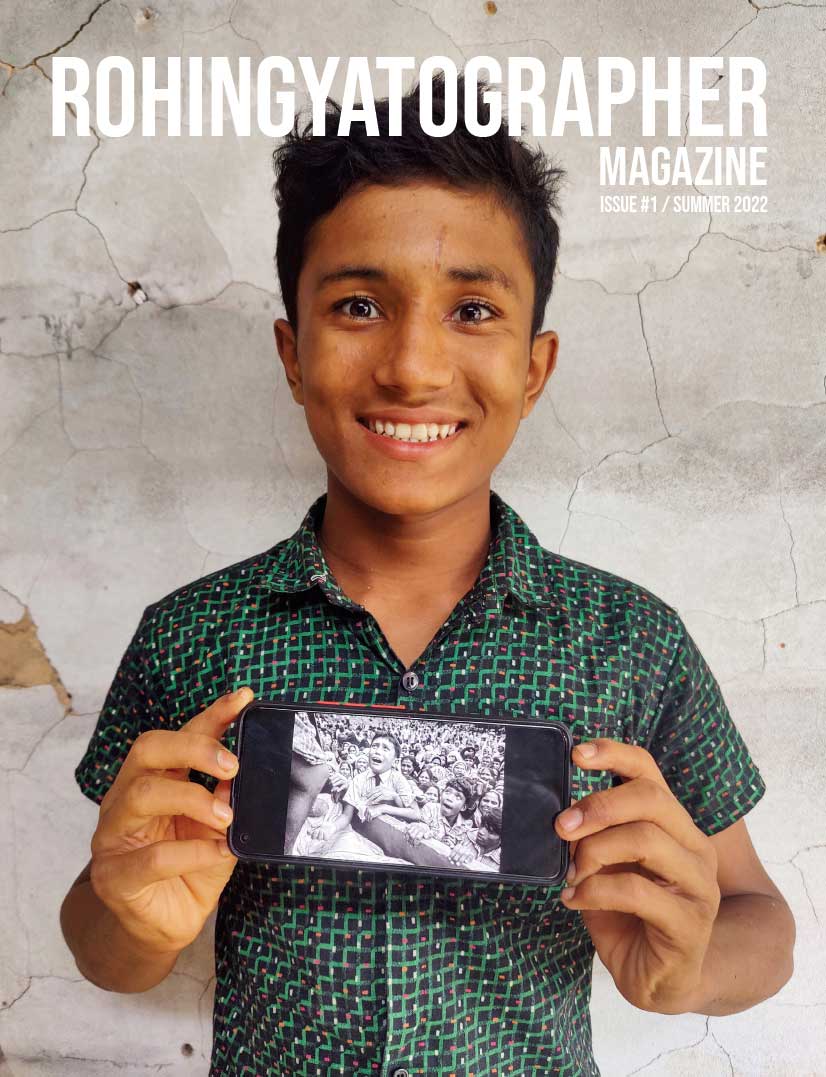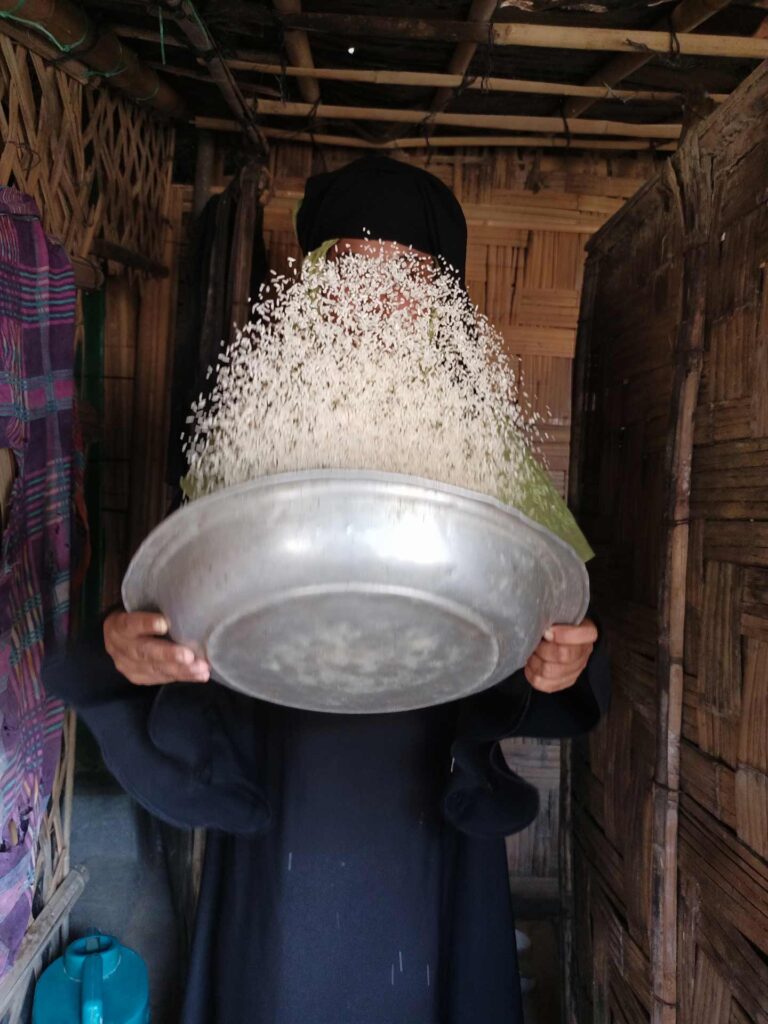A group of children take a selfie using a sandal on a hilltop in Balukhali camp.
© Ro Yassin Abdumonab / Rohingyatographer, Bangladesh
Kutupalong, located in the coastal district of Cox’s Bazar in Bangladesh, is the largest refugee camp in the world. The camp began informally in 1991 after thousands of Rohingyas fled from violent ethnic and religious persecution in neighbouring Myanmar and it has expanded dramatically in the decades since, now housing over 900,000 refugees, as the Burmese military has intensified their brutal crackdowns and extensive attacks on Myanmar’s Rohingya in Rakhine State.
Described by the United Nations as the most persecuted minority in the world, the Rohingya people face challenging and restricted lives in the camps. When the COVID-19 pandemic hit, international journalists could no longer travel to the camps and this served as an impulse for a collective of Rohingya photographers to start using social media to tell their own stories to the world.
Onaysa Khan is only 3 months old. Her name in Arabic means ‘Good Friend’, the one who brings peace and calm to the heart.
© Enayet Khan / Rohingyatographer, Bangladesh
In 2022, they started publishing a magazine, Rohingyatographer. Founded and led by Sahat Zia Hero with support from Spanish photographer David Palazón, the magazine is available in digital and printed formats, with all proceeds going directly to the photographers. The first issue deals with the subject of identity through recording the daily life and stories of the displaced community. It pays testimony to the strength, endurance, and resilience of the Rohingya people. It is a collective chronological portrait of people in the camps, from the youngest baby of 2 months to the oldest, a man of 102 years, and features 165 colour photographs by 11 young Rohingya photographers. Two photographers in the camps use their own DSLR cameras, while others use the cameras on their phones.

Md. Hasson—or “Asun,” as his friends like to call him—is 13 years old. He is a junior member of the Rohingyatographer collective. He holds a photo taken of him in 2017 when he was 8 years old, crying desperately while climbing on an aid truck. The image, taken by Canadian photographer Kevin Frayer, was shortlisted as one of the 100 best photographs by Time Magazine in 2017 and won a Pulitzer Prize. Hasson was born deaf-mute. He has developed his own remarkable language of gestures to communicate with others. His playful and creative way of expressing himself has made him very popular among his friends. His mother passed away the day she gave birth, and he was raised by his aunt and uncle. Like most boys his age, he spends most of the time in and around learning centres in the camps. He would benefit from an education program tailored towards children with special needs; however, opportunities for those with different abilities are extremely limited in the refugee camp.
Rohingyatographer Magazine Issue 1: Identity, 2022 © Sahat Zia Hero / Rohingyatographer, Bangladesh

Riah Mani is an 11-year-old girl playing with a broken mobile phone
Rohingyatographer Magazine Issue 2: Elements, 2023
© Abul Kalam / Rohingyatographer, Bangladesh
Over 50% of the camp population are under the age of 18 years old but despite limited access to formal education and an uncertain future, many young refugees have a strong commitment to learn skills by themselves and to teach others. The magazine serves as a creative platform for Rohingya youth to develop their photography skills, to build a sense of identity, to keep their culture and history alive and to connect with outsiders. In addition, the collective has had several exhibitions, including their inaugural virtual show ‘We are Rohingya’ and the latest ‘The Rohingya Experience’ featuring the images of 26 Rohingya photographers in the streets of St. Helier city centre on the Island of Jersey. Sahat Zia Hero explains that the Rohingya youth involved in the project have found solace and purpose in photography amid a pervasive sense of hopelessness that anything will change for people in the camps.”
‘We hope our zine audience will be interested in seeing the life of the Rohingya refugee community through our own eyes. We want to share our experiences with them and, hopefully, help people see us in a new light—our life with all its colour. We know we are much more than our surroundings and the labels we are given. We want people to see us as human beings, just like everyone else, and share our hopes and dreams, our sadness and grief with others—to make connections.’
Founder, editor, and photographer, Rohingyatographer


